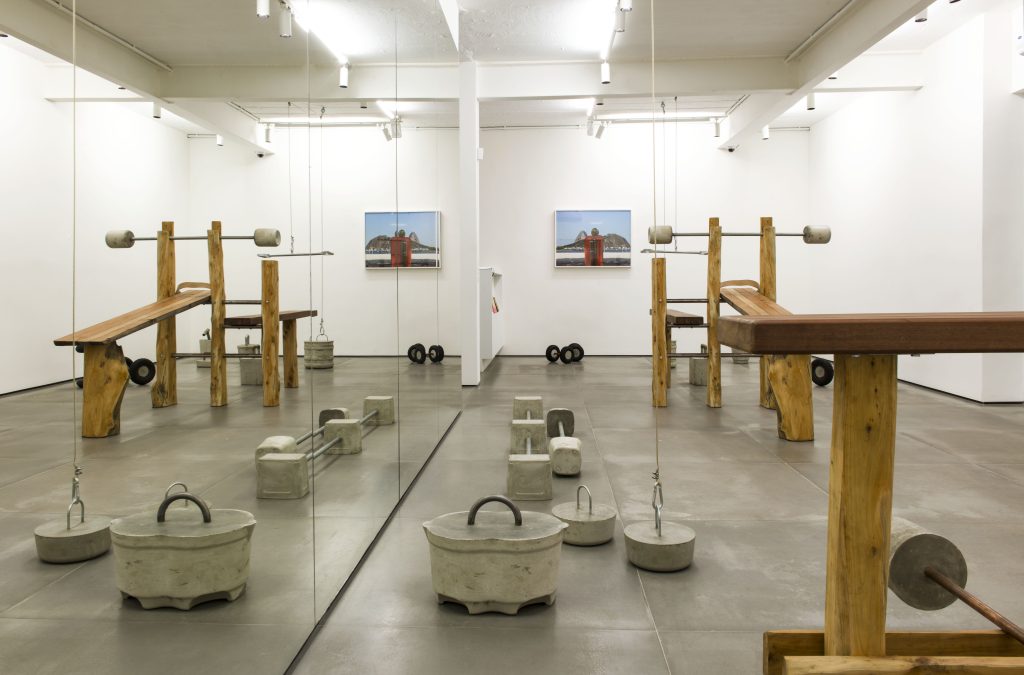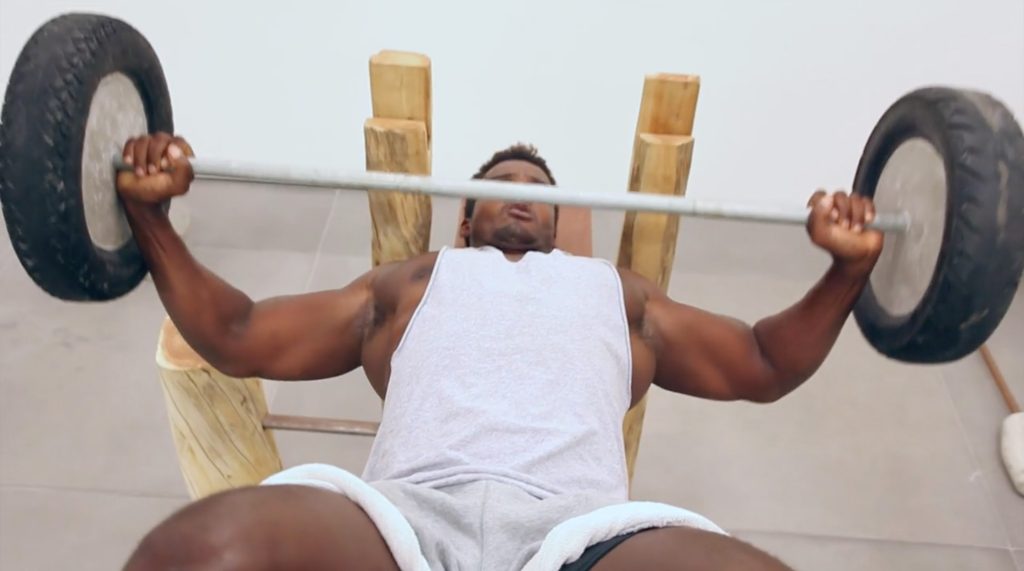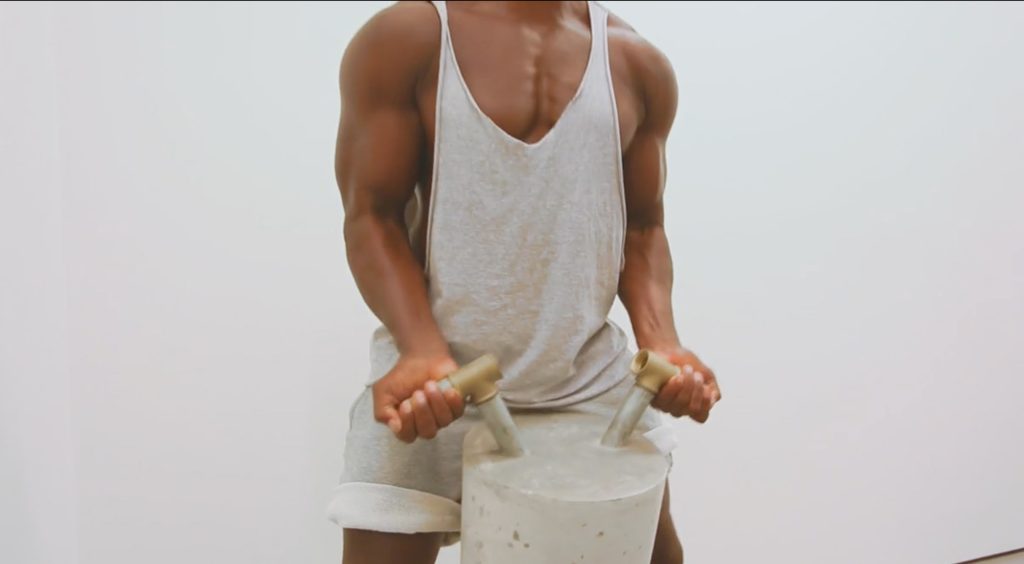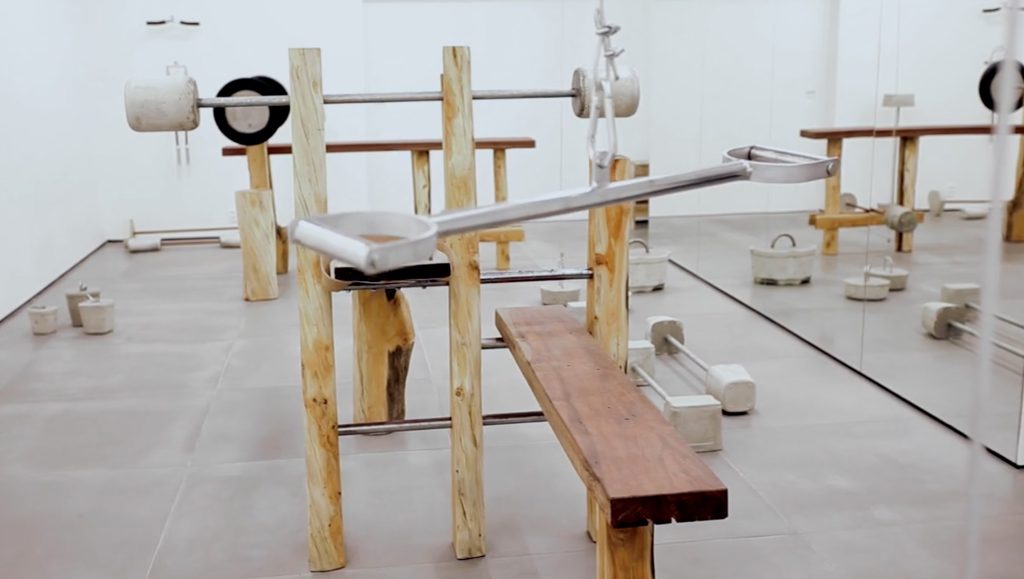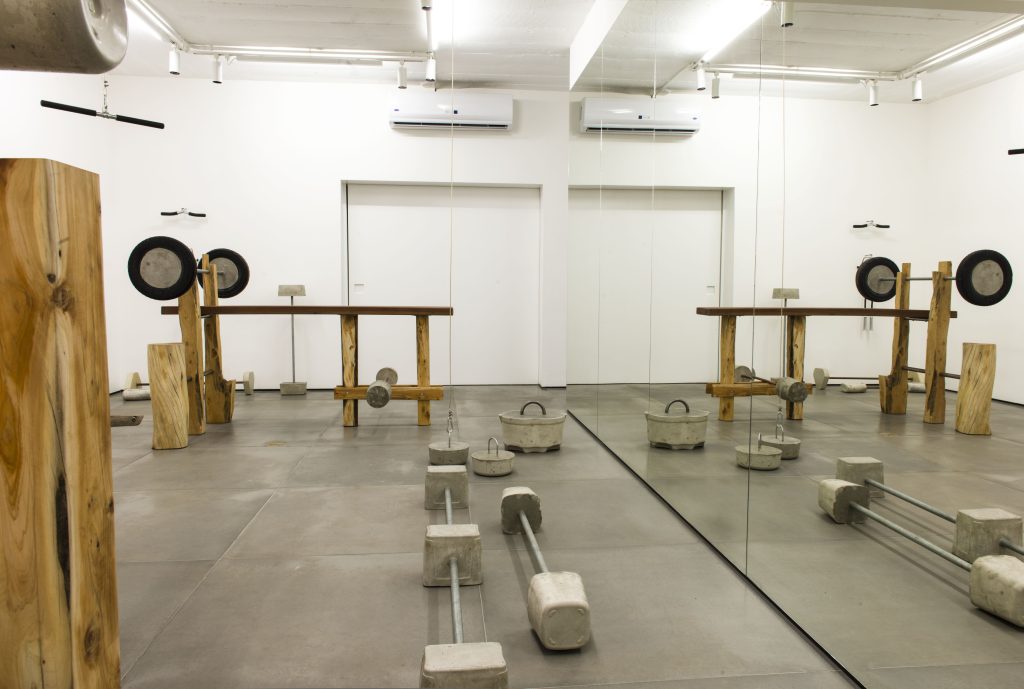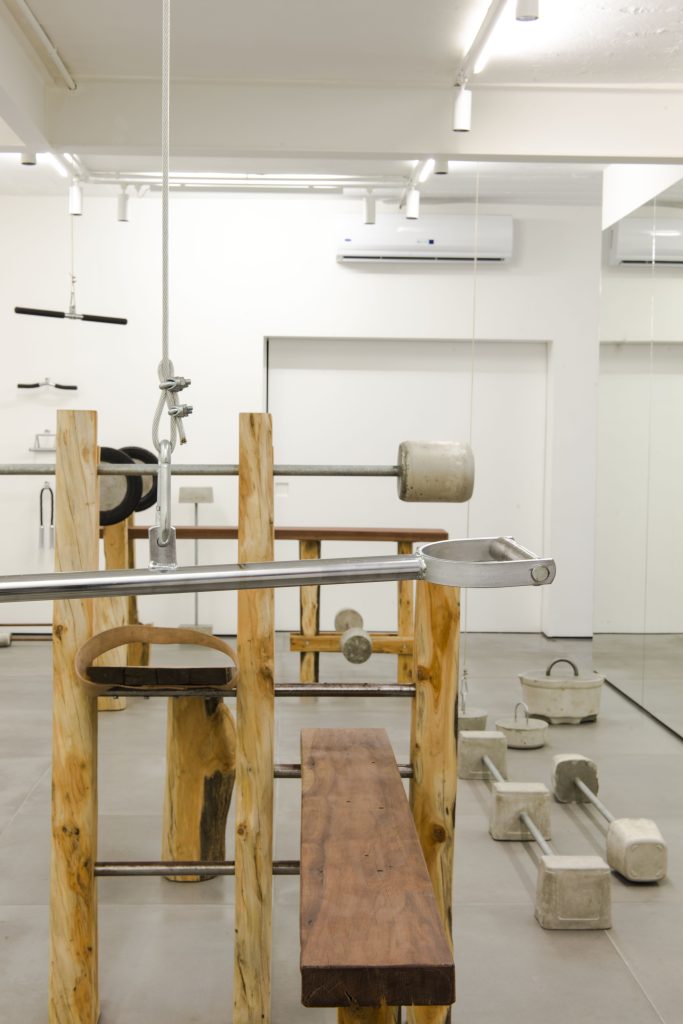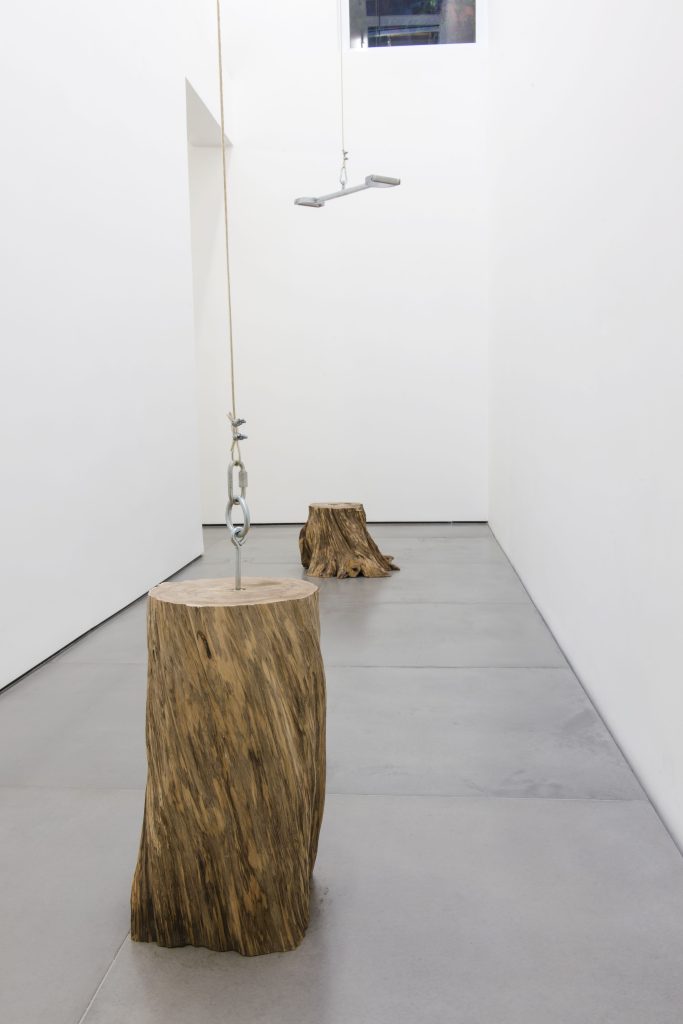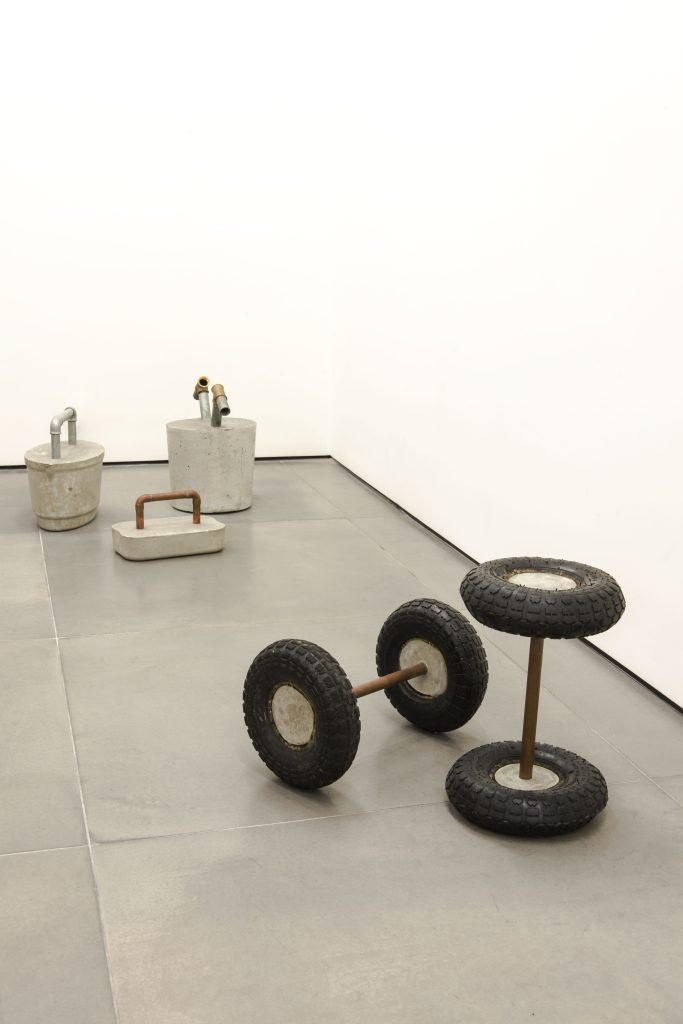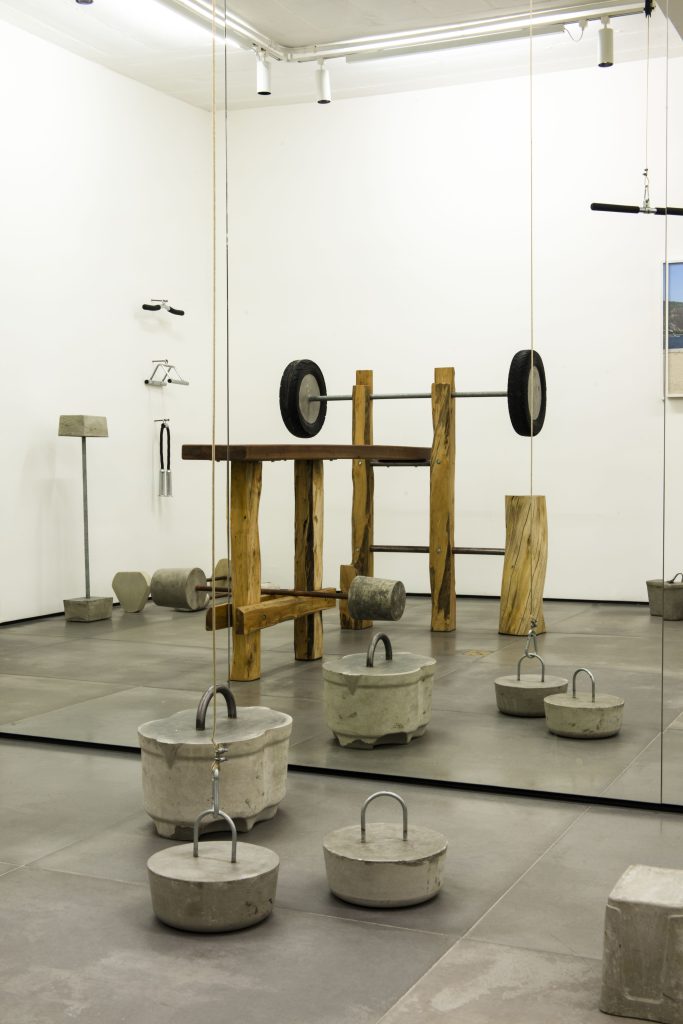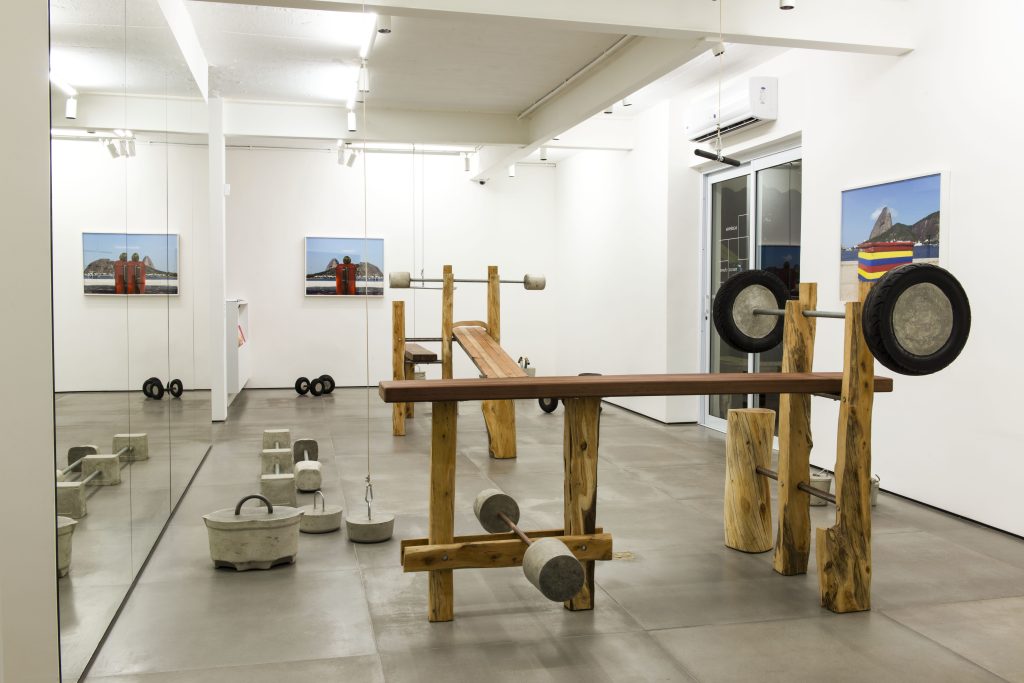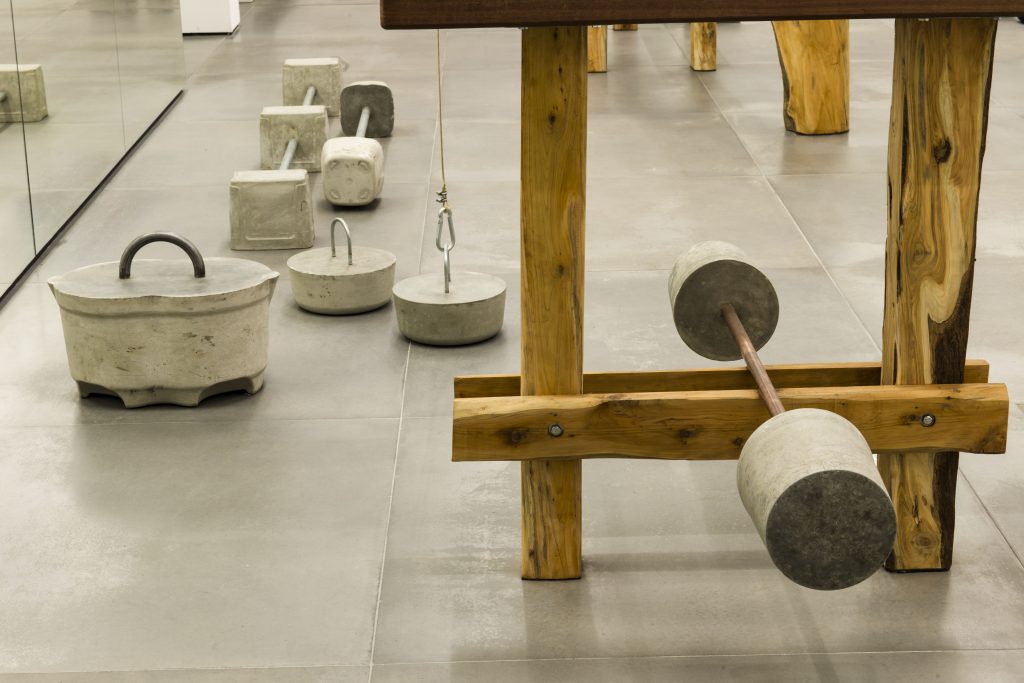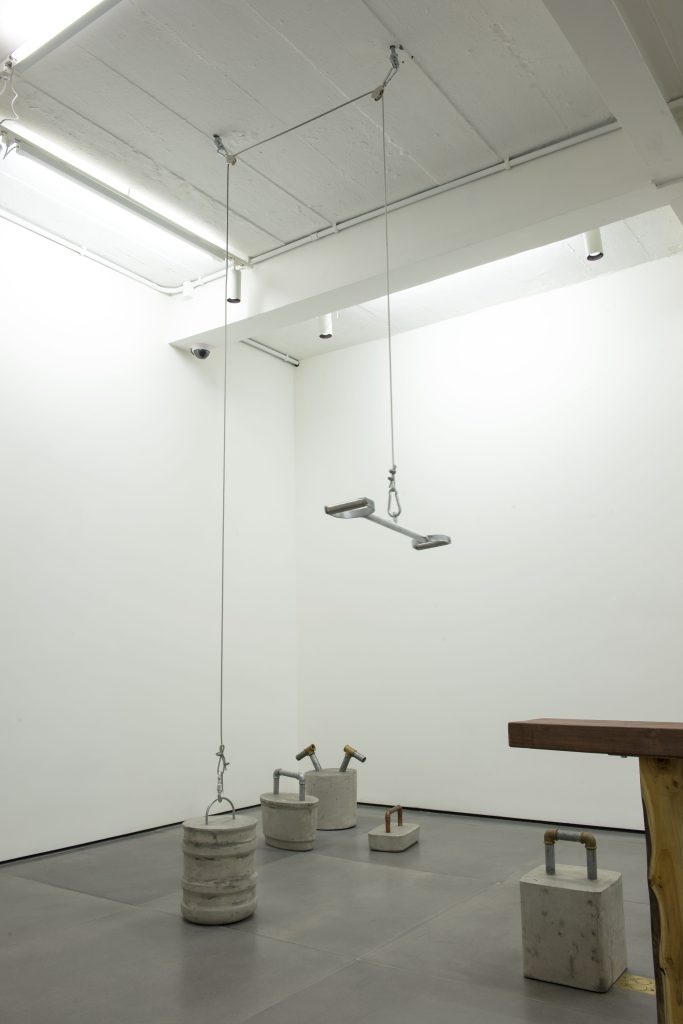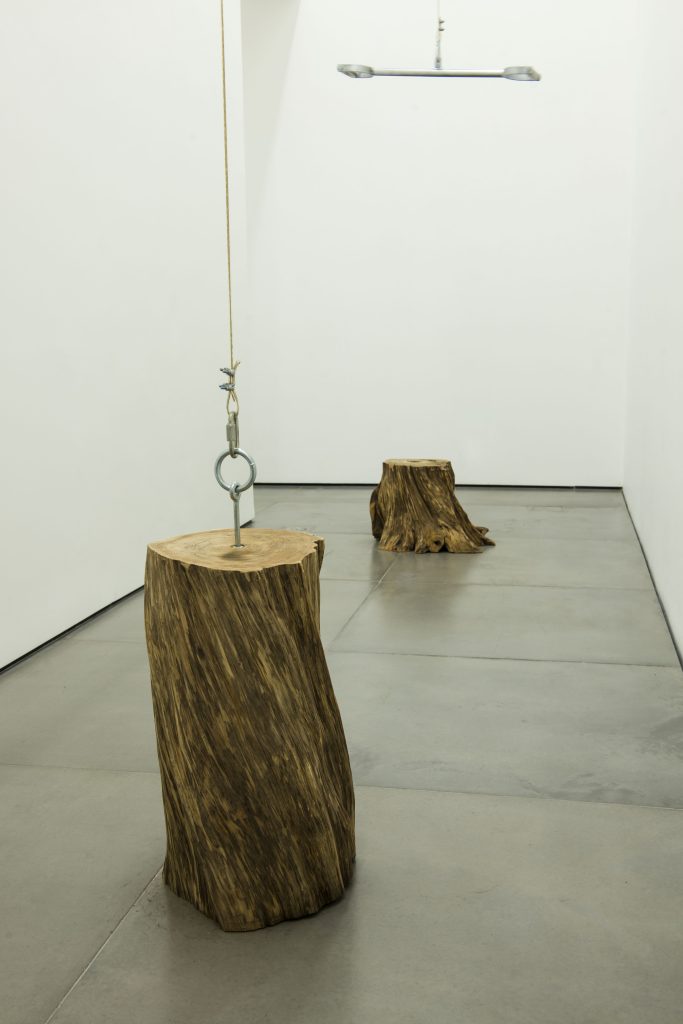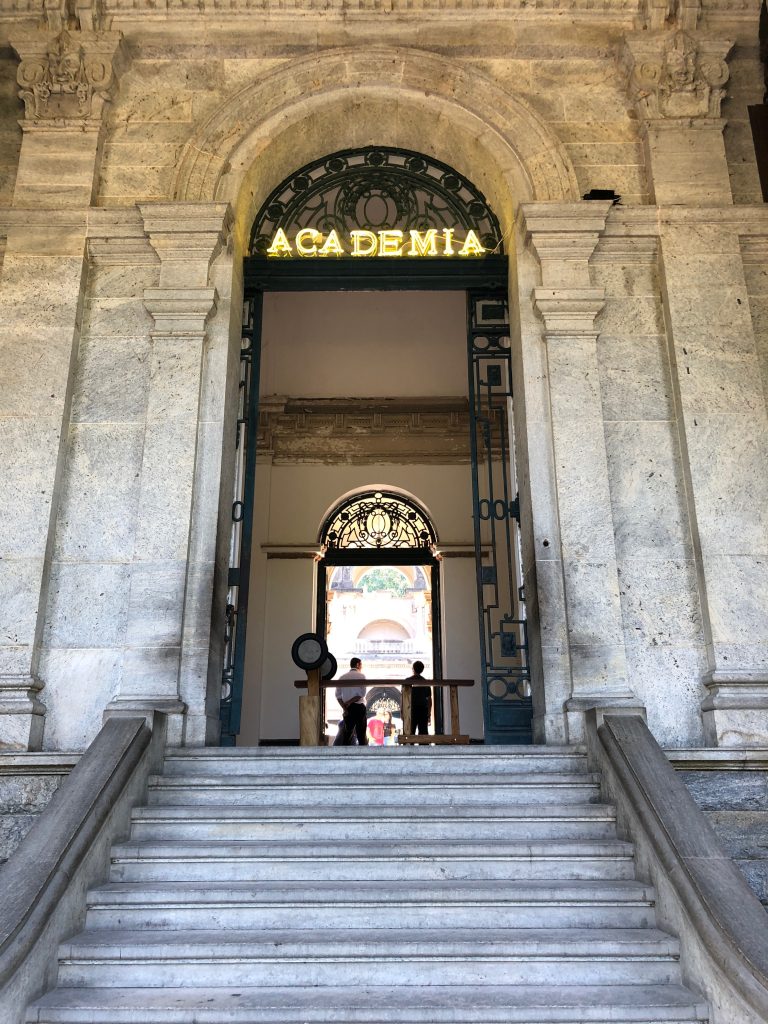


Academia



Centros comunitários e cooperativos de lazer, regulados por seus próprios pares, as academias de pedra revelam uma estrutura social sofisticada baseada em processos de colaboração. A série de esculturas apresentada em “Academia” constitui-se a partir do vocabulário de materiais daqueles que improvisam com materiais da construção civil e descartes para a construção e manutenção desses centros. Réplicas de aparelhos de ginástica orientados para o exercício físico são feitas de concreto, ferro, borracha e madeira, tal como as existentes ao ar livre em praias, praças, parques, centros de lazer e, sobretudo, das zonas periféricas da cidade. Em cimento e barras de ferro, as peças de arquitetura rudimentar tomam a própria areia, abundante nas praias, como material constituinte para esculpir os corpos que modelam em meio à paisagem.
A “Academia”, de Marcos Chaves, ironiza a estrutura acadêmica sectária como lugar que detém o saber e regula o pensar. Segundo a crítica de arte Luisa Duarte, as peças aqui apresentadas servem como resposta ao conhecimento anódino das escolas, das teorias descoladas da experiência, miram um saber que funde-se com a carne e a vida. Em repouso, as peças revelam uma situação dramática, uma cena em estagnação, em que aquilo que escapa é justamente a presença do corpo. Fundada em 1975, a Escola de Artes Visuais do Parque Lage surgiu como uma antiacademia, questionando sobretudo o lugar de poder hegemônico de nossas instituições de ensino e uma visão totalizante e colonizada dos conceitos de arte e cultura, questionando-os.
O espaço de exposição é compreendido também para fora das galerias: o neon “Academia” remarca, num gesto conceitual, uma performatividade institucional da EAV Parque Lage. Por meio da ativação de um projeto de arte, a Escola reajusta o seu próprio espaço simbólico no Rio de Janeiro e ilumina a pertinência de questionarmos aquilo que temos considerado e, sobretudo, aquilo que temos silenciado como manifestações artísticas e culturais. Criada pelo artista Rubens Gerchman como uma “antiacademia”, a EAV Parque Lage investiu em uma vertente contemporânea já expressa em seu nome ao usar o termo “artes visuais”, ampliando a compreensão do campo artístico, oferecendo novas linguagens a serem estudadas e discutidas, como fotografia, cinema e as artes do corpo a partir do terreno da cultura brasileira. Seja por meios dos ecos de sua própria história, seja por meio de sua sugestão do corpo e da paisagem, relembramos nesta escola de floresta que as primeiras escolas da civilização ocidental foram experiências comunais, com o corpo em movimento e ao ar livre.
Ulisses Carrilho
The culture of the body is a culture of its own. In Europe, it is one that comes wrapped in clothes and mystifications. Here, the body is the soft center that lurks beneath the hard carapace of appearances, the embarrassed cousin of a restless existential soul. In biblical language it was the word made flesh. But in the colder climes of the Northern hemisphere, it was always the word that came first. Intellect and the abstraction of language are the fathers of the messy instrument that is its vessel. In other words the head rules the heart.
From the outside at least, the vision of Brazil is made in reverse. What is our culture is your cult. In Brazil the body is wrapped not in clothes but in the heat of the moment, eternally bathed in mellifluous sunshine. It is ruled not by the head, but by regions more distanced from cerebral rectitude. The cliché of the body which elsewhere runs from the body of work to the body politic is here simply the beautiful body, the temple of an outdoor lifestyle to which it is itself the site of creative intervention. Nowhere more so perhaps, than in Rio and the social imaginary attached to it.
In Rio, the beach is the intermingling of the social and the natural, of conversation and flesh, sand and play. Stripped of everything but the barest modesty, it has become a uniquely democratized space where social hierarchies are cast aside like unwanted clothes. Here people wear their bodies. Rather than being something to be revealed only in intimacy and privacy, they are the public manifestation of the self, as much a part of nature as Sugarloaf, the Two Brothers or the sand of Ipanema. And like the beach, the body itself has become a site of tourism, a paradox that is equally constructed and real. Photography captures this ambivalence. Like selected memories, our photographs are postcards of this democracy, of views that can be seen but not owned, of bodies that can be looked at but not touched, of the things we desire that are not ours.
More than most Marcos Chaves understands this. His gaze is that of the flaneur, and the images he creates glance easily between cliché and understanding. Against the iconic backdrop of a landscape recognized by all yet known by few, he finds objects that split meanings and perforate the fabricated reality like the metal spikes that maintain the very real social divide. The Sugarloaf is backdrop to all of this. It presides over the natural and social orders of the waterfront, an inevitable lapidary presence that reminds us perhaps of the comic evanescence of the endeavors our own bodies bring to its shores. Long after the egret has lost interest in the silver insulation, long after the last wave of the day has been ridden, long after the gas of the shower pump has been turned off, these will remain witness to the little changes that mark the ever changing pulse of this great city.
In this way, the Sugarloaf stands sentinel to all things – as much to the complex invasion of global economy as to the simple freedoms of the beach. It is both scene and scenery. It is the backdrop for another work by Chaves on which the words, Eu só vendo a vista, appears in bold type. The title is a pun on the verb ‘vendo’ – in Portuguese it means both to see and to sell – and expresses our ambivalence about the view, a view that both belongs to the ‘Cariocas’ and is sold to the world. Now more than ever as the city exhales a World Cup only to inhale the Olympics the shared air of creativity, sport, and healthy living, the very things that are free to all and taken for granted, carry the price tag of a new type of tourism. The irony – not lost on Chaves or the culture he champions – is that the very city that above all celebrates the freedom of the body is host to its most commercial interest.
Like the view, our bodies are also for sale. We may not always be aware of it, nor may it be completely the case as Foucault would have it that the entire fitness industry is simply another example of power, identity and knowledge combining to regulate and control us even while we speak of achieving autonomy. But what can be certain is that the mechanisms we use to shape our bodies are also a reflection of the cultures from which they derive.
The sleek hi-tech gyms that measure calories and watts and calibrate our expenditure on LCD panels with heart rate monitors are a far cry from the iron that directly manifests its impression in the pump and rip of the pre-industrialized home-built body. Nothing could be further from the so called ‘Flintstone’ gyms whose makeshift arrangements – cement, sand, iron pipe – become ingenious sculptures in which the very material of the beach contributes to the bodies of its making. Here the solitary repetitious work of the treadmill and resistance machine is rendered pure performance and social exhibition. Here the faceless multi-nationals of members clubs are exchanged for the cooperative model of local community. Here perhaps, the resistance machine is the body itself.
And if all of this sounds a little complicated and heavy it is perhaps because the works of Chaves are themselves generous and light. The politics of governing bodies may encircle the informal gyms just as it bleeds into the magic light hour. The Academia (Gym), the show’s title, refers after all to the fact that Rio’s most respected institutions are schools and gyms. That they are of samba and the gym respectively may be ironic. But the beauty of their improvised forms allows us to remember, at least for the moment, that away from the roar of visiting crowds at Maracana and the infighting of Olympic committees, something far more elemental is taking place. Made of sand, stone and cement it is there for everyone.
Neville Wakefield
